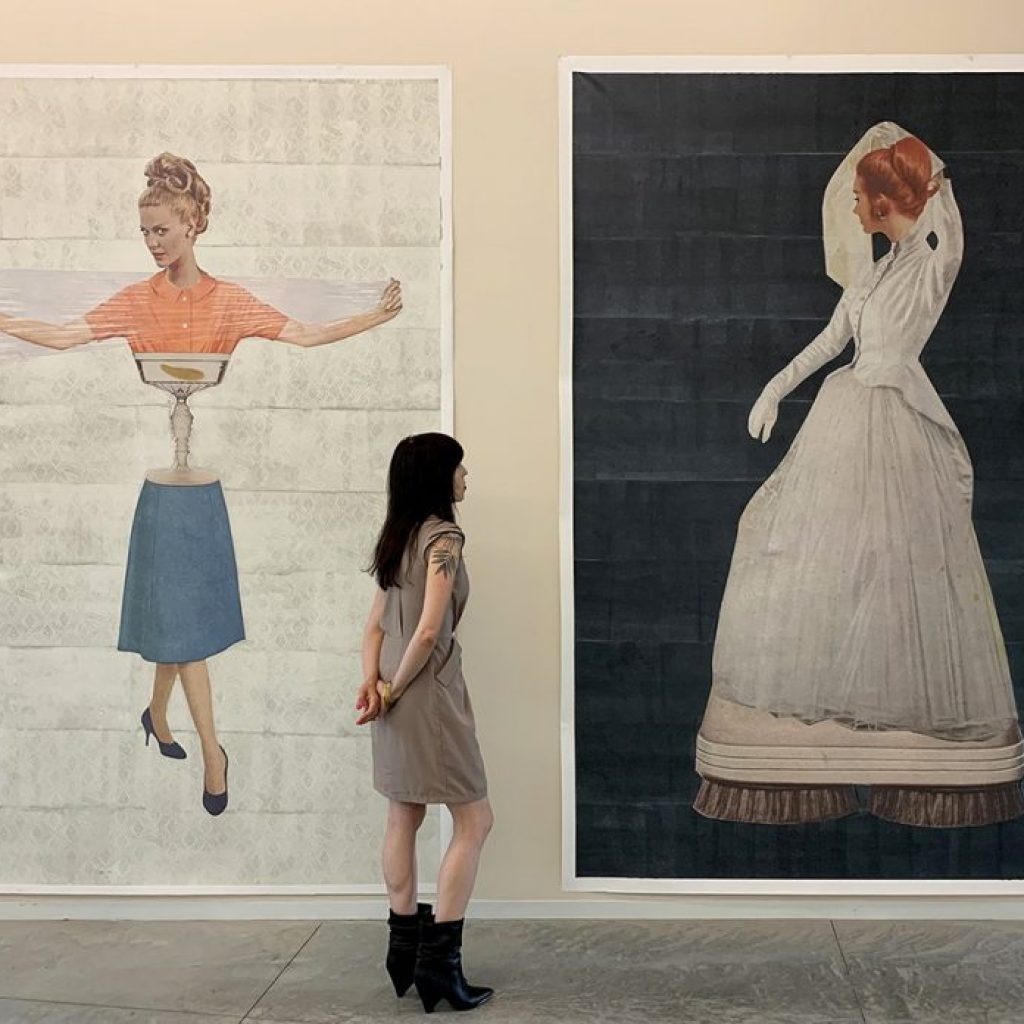Sue Johnson
Hall of Portraits from The History of Machines
Installation view, Open Studio @ I-Park Foundation
Left: Visible Woman, Right: Bride
Unique acrylic painting over printed reproduction on canvas, imprinted patterns from Bounty and Brawny paper towels
109.25″ x 72″ each
2019
_____
Artist Statement
Hall of Portraits from The History of Machines proposes an alternate pictorial history in which two objects of desire become one — the household convenience object and the emergent female form. The project looks back to the mid-20th century and identifies this era as a cornerstone in the construction of the modern woman, who begins at this time to be idealized as sharing attributes with labor-saving appliances and gadgets. Domestic convenience objects merge with the body, or vice-versa, from vacuum cleaners to coffee pots and telephones with extra-long cords. Based on authentic sources from mid-century advertising and the artist’s photography of objects in her collection, the resulting women seem familiar yet simultaneously we know that they are actually a highly fictional, patriarchal fantasy. To emphasize this artificiality, each is surrounded by a color-field created by dragging and scraping household devices through the paint. Accompanying the portraits are facsimile prints that document the exact found object sources used to create the ‘mechanical brides’ for the project. Commercially printed by a billboard sign company, each panel assembles the original sources used by the artist, represented at their original scale. For example, to create the Bride, materials include an advertisement for a Regina floor scrubber and polishing machine, an edited image of a wedding gown used to advertise new automobile models appearing in Ladies Home Journal circa 1948, and a hairstyle design performed on the head of a red-headed model. All unique and hand-painted, the works have been created on three different scales; first a large-scale work, then medium and miniature versions were made. At their original large scale, each portrait measures 109.25 inches tall, which is the exact height of Marcel Duchamp’s “The Bride Stripped Bare by Her Bachelors, Even” (often called The Large Glass). In making this reference, I seek to invite a deeper look at the taxonomy of the representation of women.




